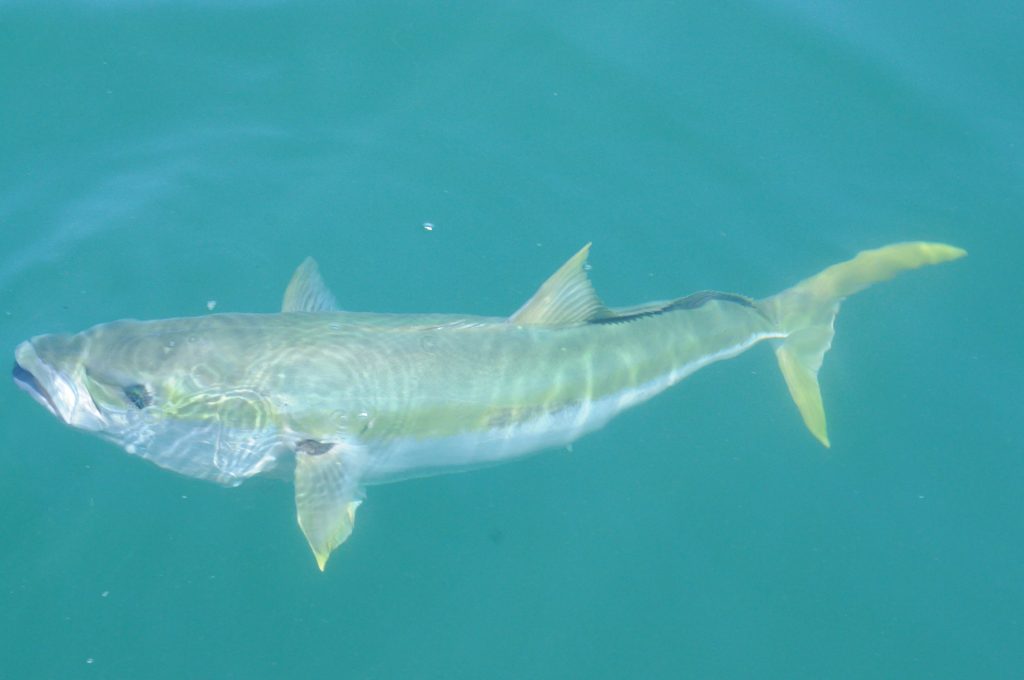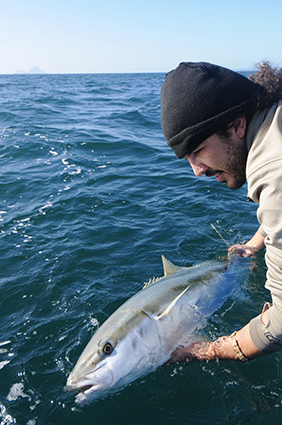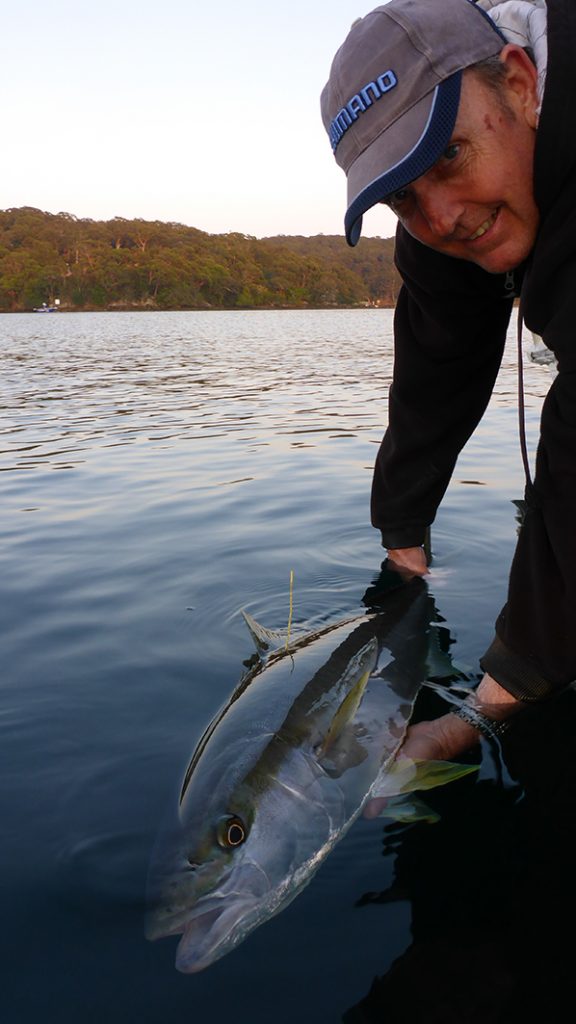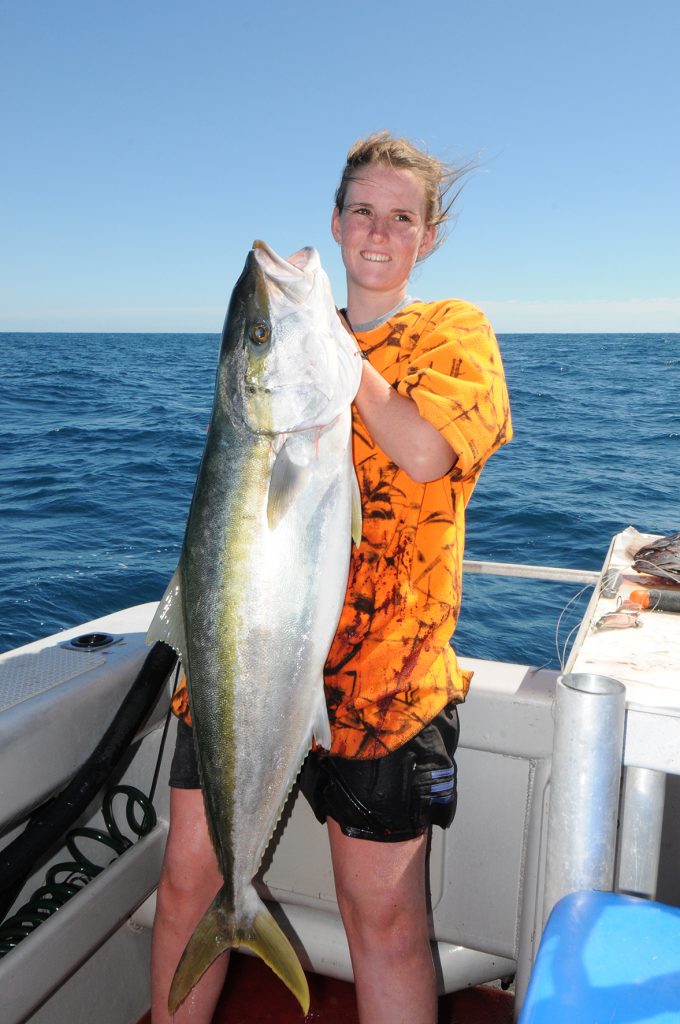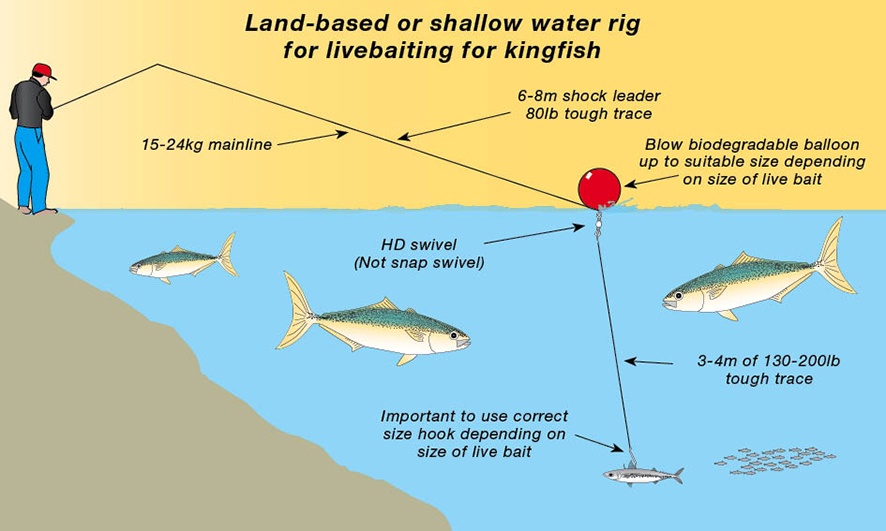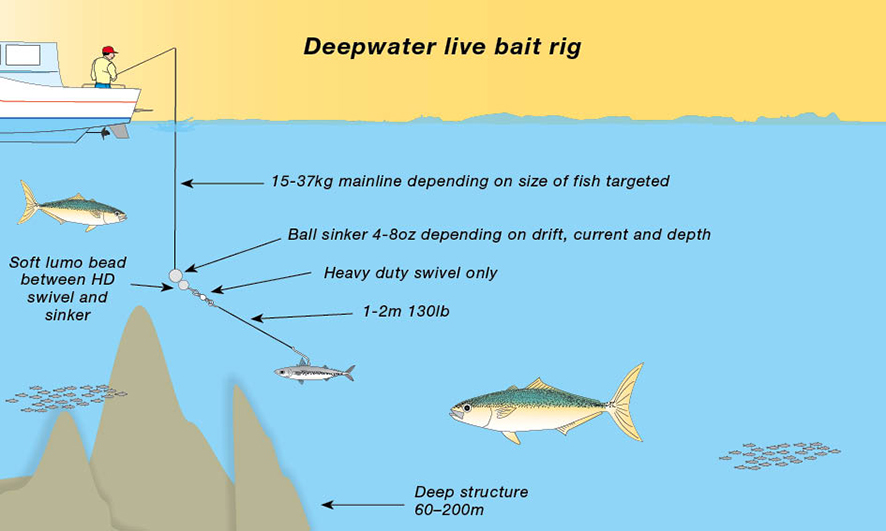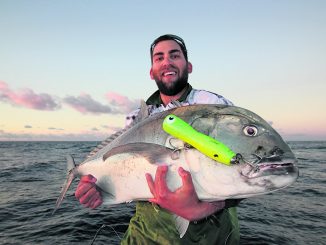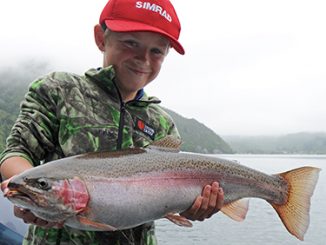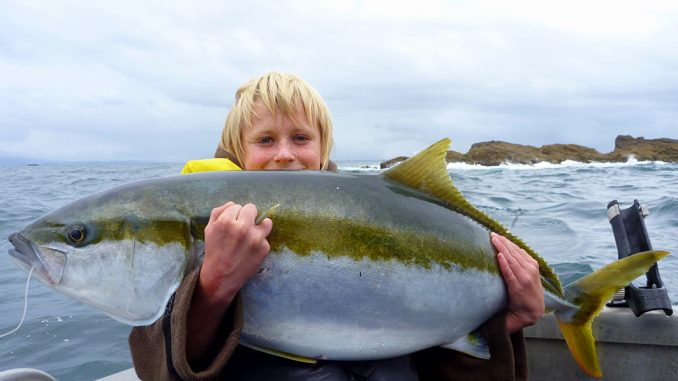
by Chris Firkin •
In December’s issue I talked about what us kiwis do a little differently as far as trout fishing is concerned. This month we talk about our biggest asset as far as most Australian anglers are concerned and the reason to travel across the ditch. We call them ‘hoodlums’ and they are exactly that. They grow to 50kg+. Where I’m from (Whakatane) 30kg is classed as a good one and 40kg is a trophy.
The largest kingfish ever caught officially in the world has come from this beautiful part of New Zealand at 52kg (two have been caught from here officially at exactly the same weight) with fishos losing even bigger beasts every season, as they can prove a little hard to slow down at 30kg, let alone at 50kg.
The largest kingy officially caught off the rocks in NZ weighed in at 42.6kg caught by Richard Baker, while live baiting off Great Barrier Island. Kingfish can be caught consistently anywhere in NZ from the top of the South Island all the way up to the Three Kings Island group where hoodlums abound in big numbers and size.
Offshore Islands like White Island in the Bay of Plenty (where the biggest kingfish has officially come from), the Aldermans, Mercury Islands group and Great Barrier off the Coromandel, further north to the Poor Knights Islands and Bay of Islands all hold good numbers of big kingfish. We are definitely spoilt for numbers, size and areas to chase them. It’s how we chase them that should interest you.
With the numbers available, which can get a little out of hand during mid to late summer, they can become a little bit of a pain when trying to target other species like snapper, tarakihi and trevally, which we often chase in shallow water on relatively light line.
Hooking a 20kg or 30kg+ king in shallow water on light line is basically a recipe for disaster. Hooking up to 11 or 12 kingies while targeting something different, the loss of gear alone starts adding up. Every once and a while, Lady Luck will be on your side, if you can get your anchor up fast enough and get on top of the fish quickly. Then your chances increase tenfold.
One thing I have learnt while fishing from the rocks for kingies is the harder you pull on them, the harder they pull on you. A smooth drag from your reel is important, as always. Play the fish smoothly and calmly without too much panic. Fighting the fish erratically won’t help your cause.
To be fair, the methods we use to chase kingfish are similar to what you Aussie anglers use, but in saying this, the bait we use when live baiting differs depending on location. More often than not, when fishing from the rocks we live bait with small kahawai (Australian salmon). They are readily available and kingfish in NZ find them irresistible.
Squid are nowhere near as prevalent in NZ as they are in Australia, but we all know kingfish love them and most of the kingy fishing I have done in NSW has been trolling with live squid.
When fishing from the rocks or boat in shallower water, live bait with 15-24kg line attached to a 6-8m shock leader of 80lb tough trace. Connect this to a good quality tournament swivel (not a snap swivel), knotted to 3-4m of 130-200lb tough trace or 120lb fluorocarbon preferably with, importantly, the correct size live bait hook, depending on the size of the live bait you are using at the tail section of your rig. Lastly, tie some mint-flavoured dental floss to the top ring of your tournament swivel, then tie a blown up biodegradable balloon to the other end of the dental floss.
The size of your balloon is dependant on the size of your live bait. You don’t want too small a balloon for a 2-3kg kahawai, as the live bait will continually pull the balloon under the water and not break away as easily when that hoodlum attacks.
Your balloon is there for two reasons – one is to keep your livey from tangling up with the bottom. Secondly, it’s an indicator to where your live bait is and when it is being harassed by a predator. The length of the dental floss between your balloon and swivel should be around 4-6”.
A very simple and deadly technique we use when drifting live baits over deep structure is to attach a tournament swivel to our main line or shock leader with a 4-8oz ball sinker, depending on current and depth, running up the main line or shock leader.
Place a small soft lumo bead between your sinker and swivel as a stopper to prevent your sinker from damaging your knot. Then tie 1.2m of 130lb tough trace to your swivel to your shorter shank live bait hook, once again making sure your hook is the correct size for the size live bait you have chosen to use.
Firstly sound out an area looking for prominent signs of bait, then drift through those areas, dropping your livey to the bottom. Then once you have hit the sea floor with your sinker, very slowly wind it up a couple of metres then slowly drop it back down.
Believe me when I say that you know when your bait is about to be eaten, as the livey gets a little agitated – funny that!
Stickbaiting, popping and technical jigging are all very effective and productive techniques that are no different in NZ than they are in Australia.
Live baiting tends to produce bigger fish on average compared to jigging or stickbaiting. If you’re lucky enough to place your lure in the right place at the right time catching, the big one is still very possible, just not as consistent on bigger models.
Why are our kingfish on average much bigger than their Australian cousins? It’s simple really – a good food source, less commercial pressure than Australia and a lot less anglers all contribute to why New Zealand has the numbers and consistently larger fish on average.
Interestingly, the largest kingfish officially caught in Australian waters was caught at Browns Mountain off NSW a long time ago. That fish weighed 52kg, the same weight as our largest ever officially caught.
Most keen Australian anglers are fully aware that places like Port Augusta in South Australia also hold consistent numbers of large kingfish, but unfortunately through commercial and recreational pressure, most places class a metre long kingfish as a good one.

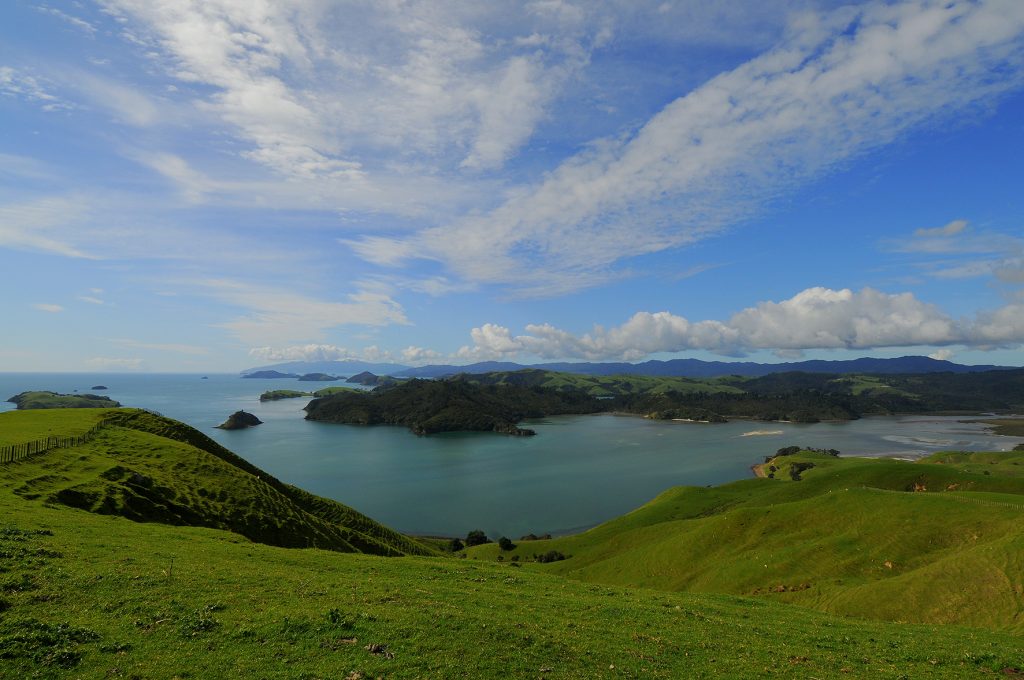 The Coromandel Peninsula is kingy heaven for those fishing land-based or from a boat.
The Coromandel Peninsula is kingy heaven for those fishing land-based or from a boat.

